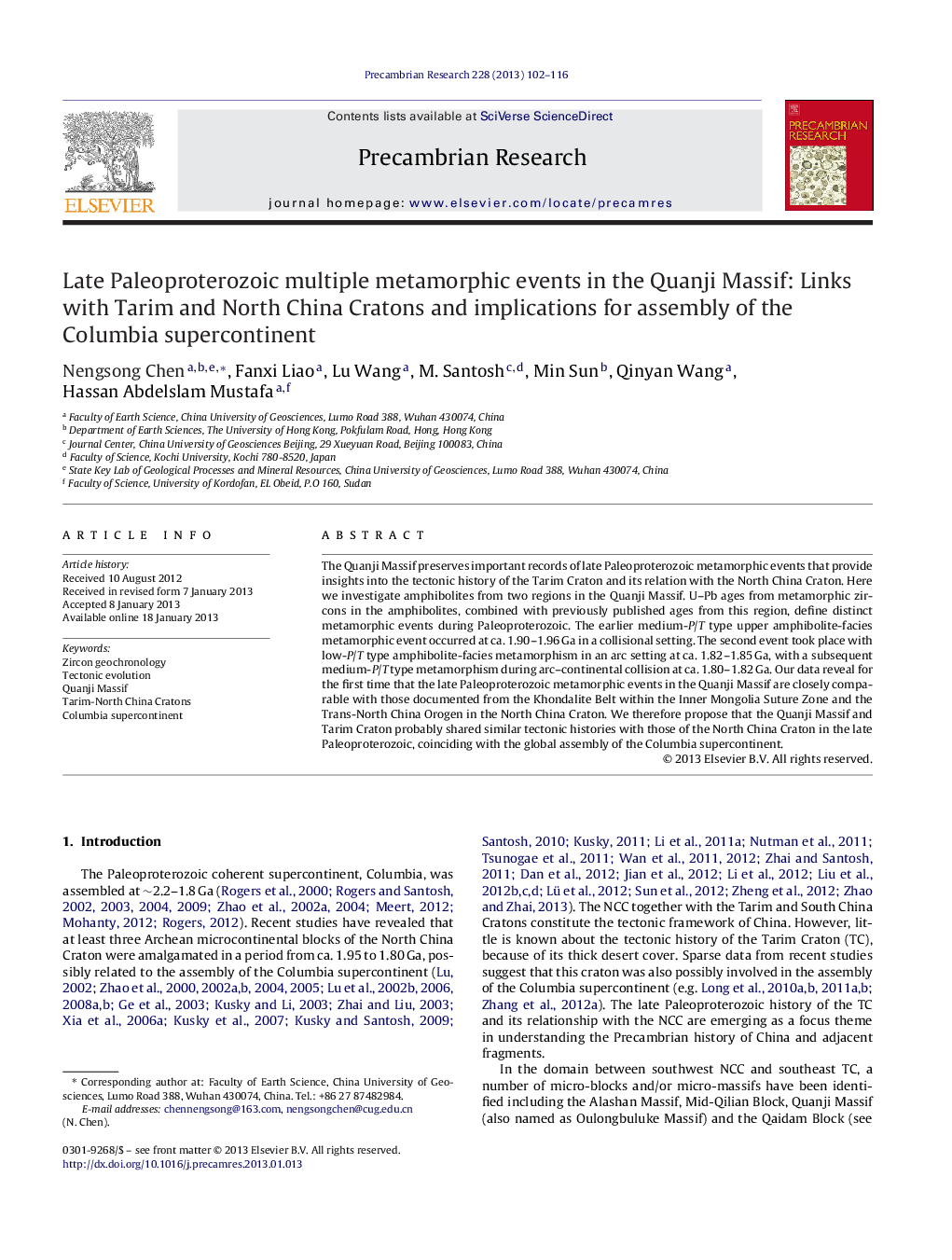| Article ID | Journal | Published Year | Pages | File Type |
|---|---|---|---|---|
| 4723423 | Precambrian Research | 2013 | 15 Pages |
The Quanji Massif preserves important records of late Paleoproterozoic metamorphic events that provide insights into the tectonic history of the Tarim Craton and its relation with the North China Craton. Here we investigate amphibolites from two regions in the Quanji Massif. U–Pb ages from metamorphic zircons in the amphibolites, combined with previously published ages from this region, define distinct metamorphic events during Paleoproterozoic. The earlier medium-P/T type upper amphibolite-facies metamorphic event occurred at ca. 1.90–1.96 Ga in a collisional setting. The second event took place with low-P/T type amphibolite-facies metamorphism in an arc setting at ca. 1.82–1.85 Ga, with a subsequent medium-P/T type metamorphism during arc–continental collision at ca. 1.80–1.82 Ga. Our data reveal for the first time that the late Paleoproterozoic metamorphic events in the Quanji Massif are closely comparable with those documented from the Khondalite Belt within the Inner Mongolia Suture Zone and the Trans-North China Orogen in the North China Craton. We therefore propose that the Quanji Massif and Tarim Craton probably shared similar tectonic histories with those of the North China Craton in the late Paleoproterozoic, coinciding with the global assembly of the Columbia supercontinent.
► Zircon ages show metamorphism at ca. 1.90–1.96, and at 1.85–1.80 Ga. ► Metamorphism in continent–continent and arc–continent collisional settings. ► Ages and geodynamic settings identical to those in the North China Craton. ► Tectonics correlated to assembly of Paleoproterozoic supercontinent Columbia.
